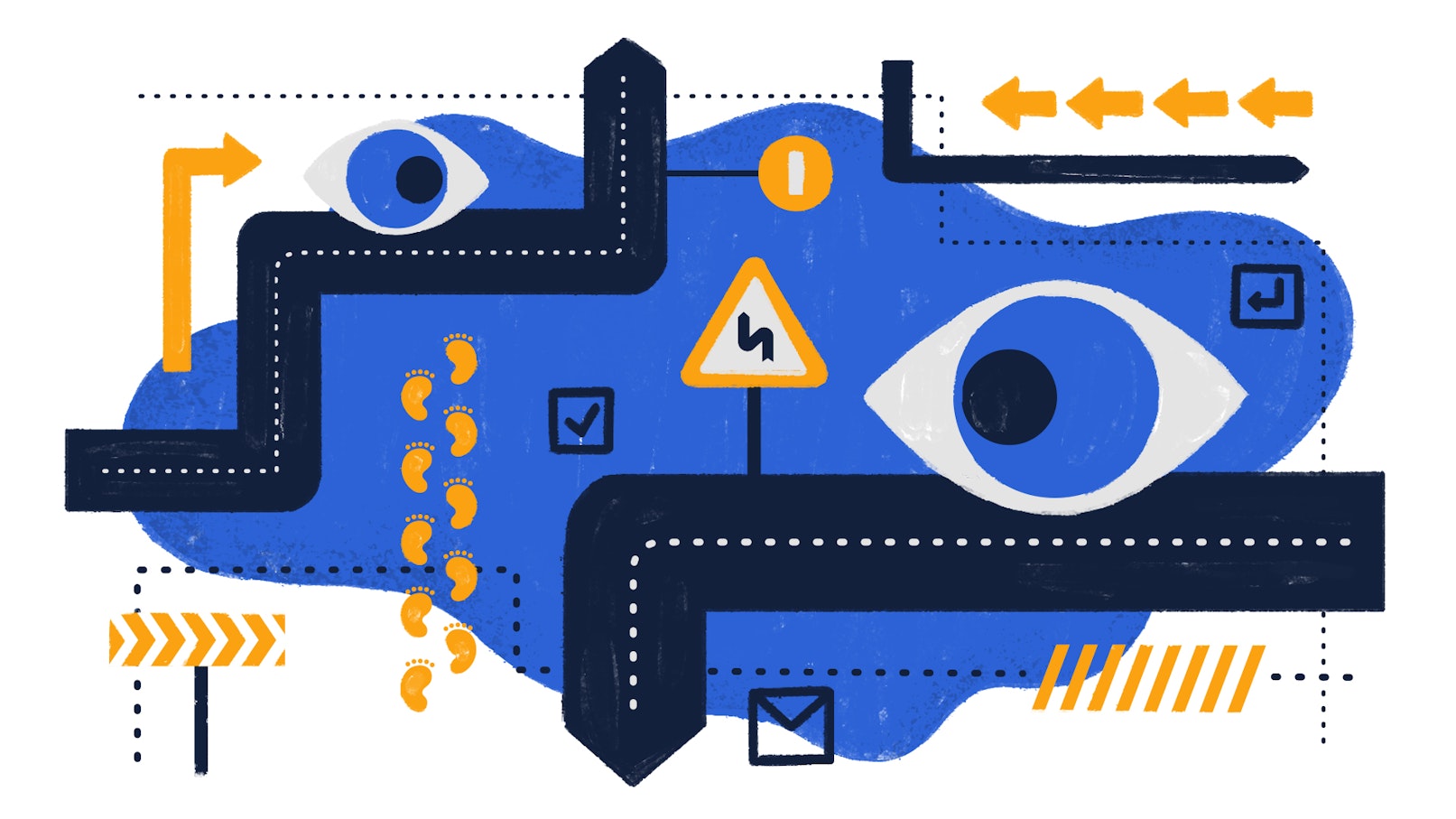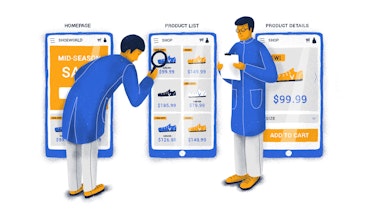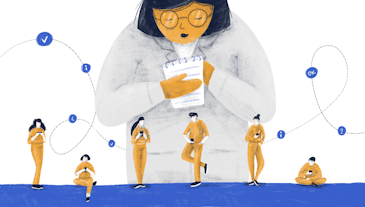Have you ever thought about user behavior: why users do what they do when they interact with a product? What triggers them to complete a positive action, like signing up for an account, leaving their email, or heading to the checkout? Is it the simplicity of the user flow, the choice of colors, the placement of buttons, or the use of words?
What about when users don’t engage with your product? Is something wrong with it? Is your marketing strategy failing you? Should you go back to the drawing board?
There is an explanation to all these questions.
“A well-known principle of human behavior says that when we ask someone to do us a favor we will be more successful if we provide a reason. People simply like to have reasons for what they do.”
— Robert B. Cialdini
The Science of Motivation

The Fogg Behavior Model was created by Dr. B.J. Fogg, a behavior scientist and computer science professor. Fogg’s behavior model outlines the importance of three elements converging at the same time in order for a behavior to occur:
1. Motivation: How motivated is the user to partake in the behavior?
2. Ability: How easy is it for the user to partake in the behavior?
3. Trigger: How is the user prompted to partake in the behavior?
When a behavior does not occur, then at least one of these core elements is missing.
However, the level at which these elements are present can vary and still result in behavior. Specifically, motivation and ability have a compensatory relationship, which means that they can vary in intensity and be traded off:
- High motivation > low ability.
- Low motivation < high ability.
For instance, a user who is highly motivated will be more willing to do something that is difficult if they are given the right trigger. Similarly, a poorly motivated user will still participate in a task if the task is easy to do and with an appropriate trigger.
Naturally, the triggers your users respond to will differ according to their individual preferences. So, what triggers one group might not work on another. Therefore, it’s best to conduct market research to better understand your users.
How Can You Influence and Change User Behavior?
Now that you know there is a whole science dedicated to the study of motivation, how can you influence — and ultimately, change — user behavior?
There are countless methods and strategies to influence user behavior, with some being more popular than others. You’ve probably experienced a few yourself.
Here are 3 methods you can apply to your UX design to influence and change user behavior.
1. Focus on Consistency

Consistent design is key to influencing how users interact with your product. It’s in the very DNA of good UX design. With the help of consistent design, users can intuitively use your product without second-guessing themselves. It helps build trust and propagates familiarity.
To achieve a consistent design, focus on standardizing different elements. For example, users should be able to predict how different design elements will behave by merely looking at them. Hence, buttons that look the same should behave the same too.
This brings us to the next point: Why do users value consistency so much?
The answer is pretty simple.
As users, we all want to feel in control. We want to be able to predict how something works without reading a user manual. We want to make connections and draw conclusions. This knowledge gives us a sense of empowerment, security, and trust.
So, what does this have to do with influencing and changing user behavior?
“A user interface is like a joke. If you have to explain it, it's not that good.”
— Martin Leblanc
By making it easy for users to use your product, you’re already ticking one of the key elements of prompting a behavior: ability. Additionally, you can use your design elements as a trigger to get users to do what you want them to, such as:
- Register as a user.
- Enter their email.
- Sign up for a newsletter.
- Leave a review.
- Add an item to their cart.
- Head to the checkout.
Consistent design is a powerful tool to influence and change user behavior, so make sure you wield it.
2. Play With Scarcity

Our brain places a higher value on things that will soon become unavailable to us, while it places a lower value on things that are easier to acquire and are in greater abundance.
By playing with the perception of scarcity and urgency, you can influence user behavior.
Here are several ways you can introduce scarcity in your design:
- Promote time-sensitive deals.This offer ends in 3 days.
- Display a countdown clock/stock meter.Only 3 left in stock.
- Offer exclusive benefits.The first 3 people to register get free shipping.
Using limited-time-offer phrasings, offering exclusive benefits, or displaying a countdown clock are all effective ways to convey scarcity and urgency. It feeds on the principle of supply and demand. As availability decreases, demand increases.
Furthermore, this sense of urgency and scarcity not only acts as a trigger but also enhances the user’s motivation to act. For instance, if you tell a user that an offer ends in 12 hours, then the user will be more motivated to act within that period of time than if the same user had an unlimited amount of time to act. This is because in such situations, users are pushed toward behaving a certain way, though often unwittingly.
3. Use the Goldilocks Effect

The Goldilocks Effect is another effective method used to influence user behavior. While you might not be aware of the name, chances are that your buying decisions have been influenced by it at one point or another.
So, what is it?
The name of the method is derived from the popular children’s story, “The Three Bears,” in which the main character, Goldilocks, tastes three different porridges. One is too hot, one is too cold, and one is just right. This “just right” option is what the Goldilocks Effect is all about — and the one you should be aiming for in your own design.
For instance, if you’re selling software, offer three types of packages: basic, professional, and enterprise. Or bronze, silver, and gold, whatever suits your product best. The first package should be the cheapest, though limited in features, and the last package should be the most expensive and have the most features. The middle option, on the other hand, should have a price and features somewhere in between the other two. Why? Users will, more often than not, choose the middle option over any others.
“It is impossible to work in information technology without also engaging in social engineering.”
— Jaron Lanier
It’s interesting to note how users’ minds process information when presented with multiple choices.
When trying out a new product, users want to avoid extremes. This includes things like extremely high prices, packages that force them into lengthy contracts, or access to excessive features. Instead, users tend to gravitate toward the more moderate option because they think it’s the typical option.
An additional trick you can try with this method is to highlight the middle option as the typical option. Give it social proof. Apply a “most popular” banner to it, or place it just a bit in front of the other options so it visually stands out. This way, you are subtly influencing user behavior.
Keep in mind that the key to successfully using the Goldilocks Effect is to offer similar options. When used correctly, this method is an unbeatable force when it comes to influencing and changing user behavior.
To really make your design speak to users, you have to start making decisions that are supported by user psychology and scientific data. Your design should be inviting, easy to use, and relevant to target users.
Influencing and changing user behavior is a huge undertaking. However, following these three methods can make the process much easier — and the rewards all the sweeter.




